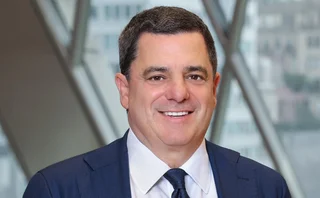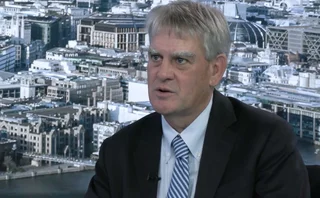
Inflation derivatives house of the year: BNP Paribas
Risk Awards 2022: Bank helps clients target eurozone inflation amid global surge in consumer prices

When 10-year eurozone inflation swaps were priced at 0.5% in March 2020, few market participants foresaw prices skyrocketing anytime soon, not even as a result of the burgeoning pandemic. The rate had only crept above 1.5% on one occasion since 2015, and even then only briefly. Once countries around the world started to impose lockdowns, the focus was largely on the prospect of a rapid increase in inflation in the UK and the US, where the price of associated derivatives had been volatile for several years.
However, BNP Paribas quickly identified that global inflation, including in the eurozone, was at risk of overshooting. This was because of the potential for a rapid recovery in demand once lockdowns had lifted and while supply chains remained constrained. As a result, from the second quarter of 2020 the bank’s inflation desk was identifying clients that were likely to be affected or that were interested in inflation trades.
“The clients that we identified at risk of being impacted by higher inflation, and that shared our view on this risk, saw current market levels as very good entry points,” says Hugo Delaborde, G10 rates private side structuring at BNP Paribas. “To put things into context, 10-year European inflation was around 0.50% at the time we started those discussions and is hovering around 2.00% today.”
One of the clients was a Belgian corporate looking to hedge its liabilities from potential re-inflation in Q2 of 2020. Having been receptive to BNP Paribas’s outreach efforts, the client believed that this was the best point at which to hedge itself from future re-inflation, given the low levels of inflation – and thus prices – in the market at the time.
The trade wasn’t without its quirks, though. The corporate’s liabilities were linked to the Belgian Health Index, an illiquid inflation benchmark. As the client’s original hedging request was for more than €1 billion ($1.14 billion) in equivalent notional, there was no guarantee that the liabilities could be hedged in their entirety – even after the corporate had paid potentially higher hedging costs in order to do so.
The ability to trade the short-dated maturities that the corporate required also appeared doubtful, given that the index’s finite liquidity is typically pooled above 10 years and the client needed maturities of less than eight. The corporate’s liabilities were also linked to the Belgian Health Index in a non-linear way, as a unique averaging formula had been embedded into its original trade – something BNP Paribas would have to amend to maximise the hedging capacity.
To solve the first problem, BNP Paribas worked to find an appropriate proxy for the corporate’s original index. The bank searched for a benchmark with a high degree of correlation so as to provide a sufficient hedge, but one that was ultimately more liquid in order to make it cheaper and easier to hedge such a significant size and maturity of liabilities. After months of analysis, it selected the Harmonized Index of Consumer Prices excluding tobacco – a more liquid eurozone benchmark, with correlation to the Belgian Health Index of more than 50%.
To solve the second problem, BNP Paribas worked with the corporate to simplify and remove the unique averaging formula that had been embedded into the original trade. The inflation desk was able to simplify the optionality part of the formula without reducing the overall effectiveness of the hedge.
Thanks to such work, by December 2020 the corporate had managed to hedge 50% of its liabilities before the price of derivatives linked to eurozone inflation started to rise – just as BNP had predicted it would.
“Unlike other parties, BNP Paribas was able to offer a solution exactly tailored to our specific situation within a very short period of time,” says the corporate’s head of finance.
Delaborde adds: “This trade is a perfect example of a client having a strong macro view and hedging accordingly, while adapting the hedge to take the trade’s complexity and liquidity – and therefore the associated costs of hedging – into account.”
Proxy bid
Inflation in the single currency area brought another profitable trade to BNP Paribas in early 2021 when an asset manager wanted to buy around €3 billion of eurozone inflation-linked derivatives as a proxy for global inflation.
Much like BNP Paribas, the client saw no reason why the creeping levels of inflation across the UK and the US might not also be seen in the eurozone. It wanted to capitalise on this by buying derivatives linked to inflation in the currency bloc while they were still relatively cheap. The client chose the French bank to execute the transaction. Although five-year forwards and five-year US and UK inflation swaps were respectively priced at 2.3% and 3.53%, eurozone inflation forwards were cheaper at 1.26%.
“Clients don’t just offer these types of trade to anyone,” says Stephane Salas, European head of inflation trading at BNP Paribas. “For this client to come to us with a trade of this size is an act of trust in BNP Paribas and our ability to handle the execution of this trade internally.”
Because of the size involved, BNP Paribas used its franchise to stealthily source the majority of the trade’s liquidity. This prevented the market from catching wind of the trade and beginning to trade in the opposite direction – something that would have moved the market against the bank and made the trade much harder, and more expensive, to execute for the client.
By the end of 2021, the client’s view had been vindicated. Although eurozone inflation had stood at 1.26% on January 4, by December 31 it stood at 1.97% – a 56% rise. During the same period, UK inflation only rose from 3.53% to 3.93% – an increase of 11%. It was a similar story for the US, where inflation sat at 2.56% by the end of the year compared with 2.31% at the start – a rise of almost 11%.
Salas estimates the client has made a profit of at least 80 basis points from the trade.
“They probably still have some of that position on – I don’t know,” he says. “But it was definitely a big moneymaker for the client that year. To put on that trading size, sit on it, and wait for inflation in the eurozone to [go] higher was an incredibly profitable trade. It was probably the biggest and most profitable inflation trade in 2021.”
Corporates clean up
In 2021, BNP Paribas carried out a record 17 inflation trades with corporate clients, despite losing two integral members of the inflation desk in June.
One of these trades had originally been mandated in February 2020 by Yorkshire Water to help roll the breaks due in 2023 on a section of its £151.5 million ($205 million) portfolio of uncollateralised long-dated inflation swaps, which are set to mature beyond 2050.
Zero-coupon inflation swaps typically have a balloon payment at maturity, meaning they generate large counterparty risks for the dealers through the lifetime of the swap. Including periodic break clauses in the swap allows the banks to get out of the trade if the risk becomes too great. However, the breaks need to be rolled repeatedly through the lifetime of the trade, which poses periodic headaches for corporates.
With traditional repacks, which have been around since 2012, inflation cashflows and counterparty risk are typically transferred to inflation-seeking third-party investors via notes issued by a special-purpose vehicle. Yorkshire Water was no stranger to these structures, having used one in 2015 to roll its swap breaks. However, BNP Paribas is one of the few banks able to do away with the SPV and intermediate the cashflows between the parties instead. This makes it easier for corporates such as Yorkshire Water to engage in swap repacks when they cannot face SPVs directly.
After months of structuring discussions, BNP Paribas was able to repack Yorkshire Water’s swaps and transfer the cashflows to external investors, thus allowing the corporate to roll the breaks on its swaps for five years or longer. There was an upward adjustment in the coupons paid by Yorkshire Water, but BNP Paribas’s structure was done in such a way as to make future breaks easier to roll.
“The way we restructured these swaps means that we’ve reduced the risk for the client the next time they need to deal with those breaks,” says James Ritchie, head of corporate rates and FX solutions sales, UK, at BNP Paribas. “So we’ve essentially helped the client to deal with risks arising from the future before they actually get there.”
David Gregg, head of corporate finance at Yorkshire Water, was pleased with the result: “BNP Paribas maintained a flexible approach and commitment to finding a best-fit solution that delivered a better-than-targeted outcome.”
Novation, novation, novation
Last year was also a record for BNP Paribas in terms of the number of novations it undertook from banks exiting the inflation market or cutting back their exposures in order to gain access to new long-term clients and trading opportunities. The bank stepped into more than 15 inflation trades due to banks exiting the uncollateralised inflation swaps market in 2021.
“BNP Paribas aren’t just grossing up our balance sheet to make P&L,” says Ritchie. “We’re targeted in using our balance sheet where it makes sense. Last year, we set out to increase our market share by reaching out to specific clients in relation to novations. As part of this, we also considered clients who we suspected were likely to restructure their trades at some point in the future.”
According to Delaborde, two-thirds of the novations BNP Paribas undertook in 2021 became “smart novations” – whereby clients engaged in some kind of trade restructuring with the bank either immediately after or just after joining it as a client.
Only users who have a paid subscription or are part of a corporate subscription are able to print or copy content.
To access these options, along with all other subscription benefits, please contact info@risk.net or view our subscription options here: http://subscriptions.risk.net/subscribe
You are currently unable to print this content. Please contact info@risk.net to find out more.
You are currently unable to copy this content. Please contact info@risk.net to find out more.
Copyright Infopro Digital Limited. All rights reserved.
As outlined in our terms and conditions, https://www.infopro-digital.com/terms-and-conditions/subscriptions/ (point 2.4), printing is limited to a single copy.
If you would like to purchase additional rights please email info@risk.net
Copyright Infopro Digital Limited. All rights reserved.
You may share this content using our article tools. As outlined in our terms and conditions, https://www.infopro-digital.com/terms-and-conditions/subscriptions/ (clause 2.4), an Authorised User may only make one copy of the materials for their own personal use. You must also comply with the restrictions in clause 2.5.
If you would like to purchase additional rights please email info@risk.net
More on Awards
Collateral management and optimisation product of the year: CloudMargin
Delivering the modern blueprint for enterprise collateral resilience
Flow market-maker of the year: Citadel Securities
Risk Awards 2026: No financing; no long-dated swaps? “No distractions,” says Esposito
Pricing and analytics: fixed income – Quantifi
Quantifi delivers high-performance, transparent and adaptable pricing and risk analytics for fixed income and credit markets
Derivatives house of the year: Citi
Risk Awards 2026: Rev up, RWAs down, as US bank gets back on track (with added XiNG and XiP)
Technology vendor of the year: SS&C Algorithmics
Risk Awards 2026: From cloud, to chips, to maths tricks – vendor getting more out of existing tech
SS&C Algorithmics: winner’s interview with Curt Burmeister
SS&C Algorithmics wins three categories in this year’s Markets Technology Awards in addition to Technology vendor of the year at the Risk Awards
Best vendor for system support and implementation: Murex
Murex wins Best vendor for system support and implementation at the Markets Technology Awards 2026
Pricing and analytics: cross-asset and structured – Murex
Murex wins Pricing and analytics: cross-asset and structured at the Markets Technology Awards 2026 thanks to its MX.3 platform







